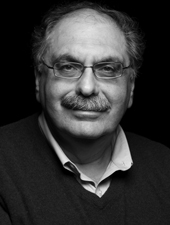Frenette, P. S., Mendez-Ferrer, S., Lucas-Alcaraz, D., Batista, M., Lira, S., Michurina, T. V., Enikolopov, G. N. (November 2009) The Hematopoietic Stem Cell Niche. Blood, 114 (22). p. 1586. ISSN 0006-4971
Abstract
The concept of stem cell niche, proposed by Schofield 30 years ago, refers to the ability of the microenvironment to regulate stem cell fate. The niche provides critical signals allowing hematopoietic stem cells (HSC) to survive, and if so, whether to remain in or to leave the niche (mobilization), or whether to remain quiescent or divide. Some of these signals originate locally from the niche cell(s) but others are coming from afar. For example, we have found that signals from the sympathetic nervous system (SNS) promote the release of HSCs from the bone marrow (BM) niche. Under steady-state conditions, HSC egress in blood is orchestrated in a circadian manner where the fluctuations of circulating HSCs/progenitors are matched with antiphase oscillations in the expression of Cxcl12 mRNA in the BM microenvironment. These oscillations are entrained in the brain by the molecular clock through the local delivery of norepinephrine by SNS nerve terminals in the BM, and transmitted specifically by the β3 adrenergic receptor (Adrβ3) expressed on CXCL12-producing stromal cells, thereby leading to the cyclical degradation of the Sp1 transcription factor. In humans, the circadian release of HSC is inverted compared to rodents and may influence the stem cell yield even when mobilization is enforced by granulocyte colony-stimulating factor (G-CSF), suggesting the potential benefit to harvest HSCs in the clinic at the optimal circadian time. Given the coupling of nervous signals with the stem cell niche, we would expect that the stromal cell forming the niche would be intimately associated with nerve fibers. We have recently found using transgenic mice expressing the green fluorescent protein (GFP) under the Nestin promoter elements (Nes-Gfp), that GFP+ cells (referred to as Nestin+) form a HSC niche in the marrow. Nestin+ cells comprise a relatively small subset (0.08 ± 0.01%) of total BM nucleated cells that is anatomically and functionally associated with the vast majority of CD150+ CD48- Lin- HSCs near blood vessels and SNS fibers of the BM. Nestin+ niche cells express high levels of core genes regulating HSC retention (Cxcl12, Kit ligand, Vcam-1, Angiopoietin-1), and these genes are downregulated by mobilization induced by G-CSF or administration of Adrβ3 agonists. We have identified putative Nestin+ niche cells as bona fide mesenchymal stem cells (MSCs) since they can be propagated as single clonal spheres capable of self-renewal, dramatic in vivo expansion, and multipotency to form osteoblasts, adipocytes, and chondocytes. These data argue for a unique bone marrow niche formed by the pairing of the two rare stem cells, mesenchymal and hematopoietic, that exist in the marrow.
| Item Type: | Paper |
|---|---|
| Additional Information: | Meeting Abstract |
| Subjects: | Publication Type > Meeting Abstract therapies > stem cells |
| CSHL Authors: | |
| Communities: | CSHL labs > Enikopolov lab |
| Depositing User: | Matt Covey |
| Date: | 20 November 2009 |
| Date Deposited: | 21 Feb 2013 15:07 |
| Last Modified: | 13 Mar 2018 18:41 |
| URI: | https://repository.cshl.edu/id/eprint/27391 |
Actions (login required)
 |
Administrator's edit/view item |



